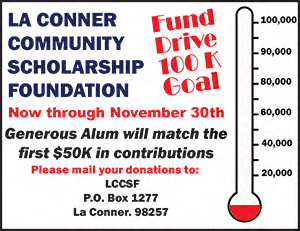Musings – on the editor's mind
September 14, 2022
Something felt odd being outdoors Friday. The hazy heat was tempered mid-afternoon by a sky turned gray with smoke from distant wildfires. That tilted the day away from a typical end of summer northern Puget sound experience. And consider, we would have faced a hotter day if the smoke had not blocked the sun's rays.
How quickly human induced climate change changes the weather. Thursday the forecast was for highs in the 80s and maybe reaching 90 degrees. At 11:15 a.m. Saturday I was switching to jeans and a long sleeve shirt as smoke created overcast cooked temperatures down to the 50s. The famous Skagit Valley mystic light had an odd brownish tinge to it.
The heat forecast collided with smoke warnings and smoke triumphed, smothering the sun and lowering temperatures.
That was the morning. By 1 p.m. an orange red beach ball sun shined through the haze and the air tried to feel warm. The sunlight bleached to a light late day orangish hue and tree and building shadows were pale and weak.

Sunday the morning started cool, caused by the smoke again blocking the sun. By 9 a.m. the sun broke through, again shining weakly, the light that odd orange red on surfaces. The smoke also reached the ground, hanging visibly at just the right height for inhaling.
My thoughts turned, melodramatically, to newscasts from the Dust Bowl era and air turned brown over New York from Great Plains soil. Dust was in the air for years in the 1930s and made it to the east coast more than once. Look it up.
Forecasts on the radio warned of dust clouds rolling east, but when they arrived to darken and chill New York City, many had to be taken by surprise and surely everyone was awed by the event.

Is anyone surprised today when smoke from east of the Cascades gets in their eyes?


Reader Comments(0)